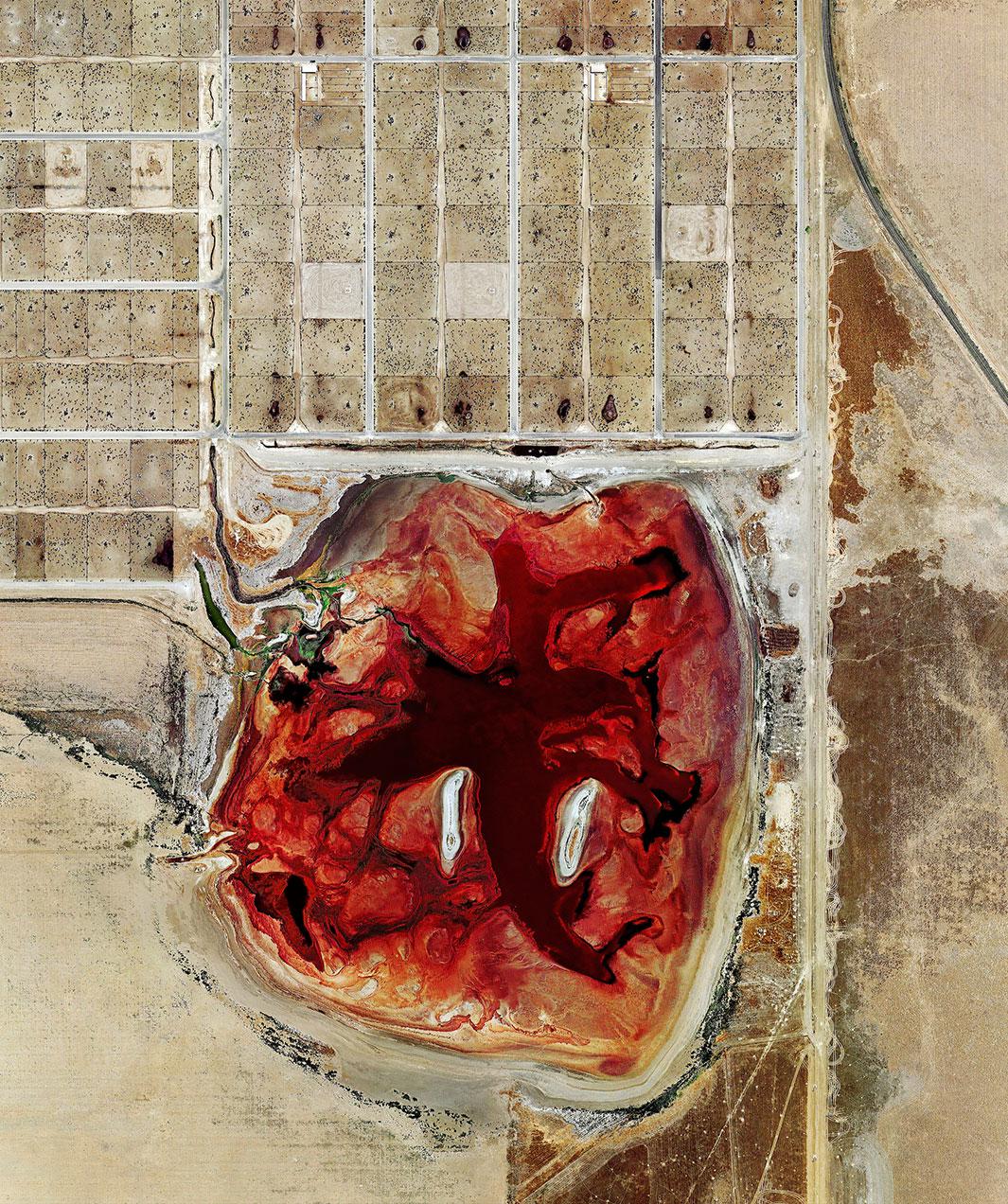While Mishka Henner was searching for satellite images of oil fields in the United States for a project, he came across a lot of small black-and-white microbial-looking dots. The dots turned out to be cattle on feedlots—essentially large-scale animal feeding operations that raise livestock quickly and cheaply for slaughter and consumption.
Because he didn’t know about feedlots or how they worked, Henner scanned through thousands of images and downloaded state registers for feedlots; he read government studies and research reports and became fascinated by what he learned. From the images he downloaded, he edited his search down to seven feedlot sites that were stitched together from his findings and are part of his series “Feedlots.”
Henner said he wanted to create images that highlighted how the meat industry works, as well as our culture’s approach to eating animals. “[T]his is so central to our attitude to food and to profit and to mass production and mass consumption; it was almost an ideal image that manages somehow to be mysterious and at the same time to have the entire logic there in one single frame,” Henner said.

Mishka Henner, Courtesy of Bruce Silverstein Gallery, New York
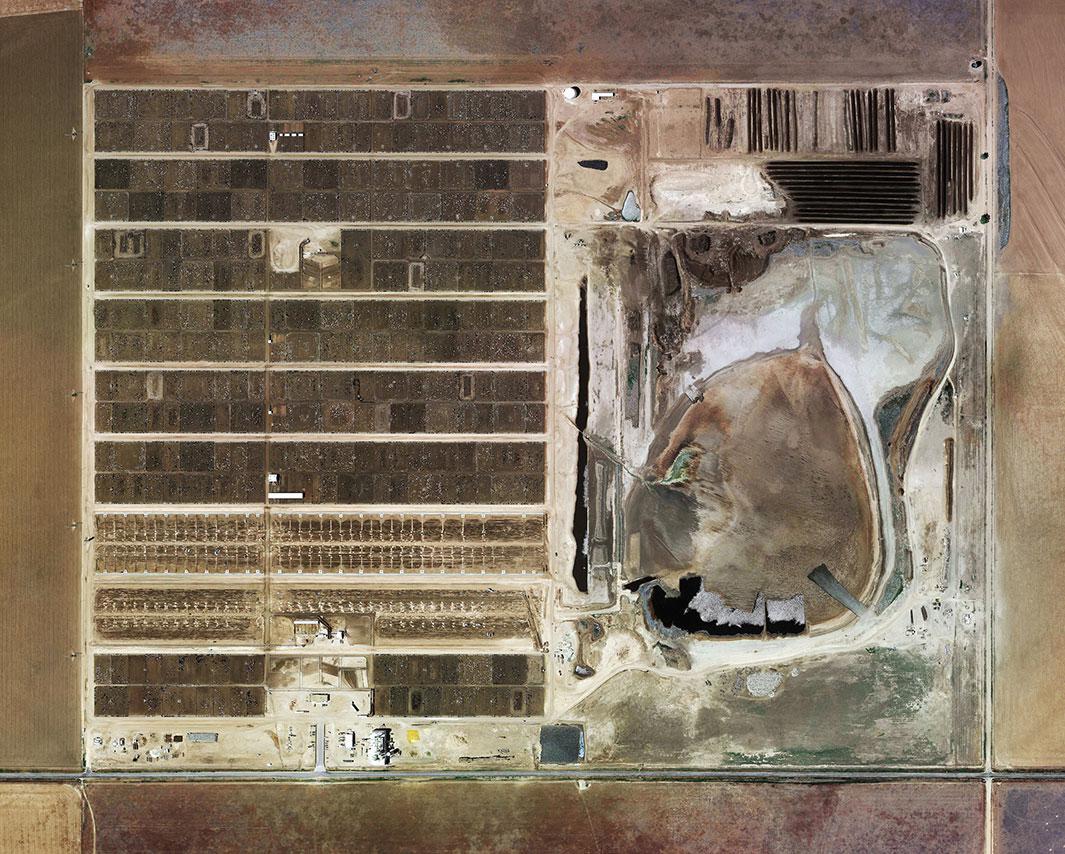
Mishka Henner, Courtesy of Bruce Silverstein Gallery, New York
Even with the satellite technology, Henner said he wasn’t able to include the largest feedlots in his edit—including them in their entirety would have created images that would have been 5 or 6 meters tall. Still, he feels the subjects he included in the series are able to convey a lot of what is happening on the ground.
“We live in a world where the scale of these industries are so vast,” he said. “We can’t see them, and we have no way to visualize them and as long as we can’t, then we struggle to conceptualize them and to get our heads around it to understand the scale and the consequences.”
Henner said he once described himself as a “traditional” documentary photographer, but he added that although a lot of the projects he worked on were more intimate, he was missing the opportunity to bring more information to his photographs. That changed as he switched his focus.
“I felt by using these tools such as Google Earth, there were huge archives of data that were a single search term away,” he said. “A citizen like myself was able to use the tools and methods that for decades had only been available to a limited group of experts. … It is possible now for any of us to expose the elephant in the room.”
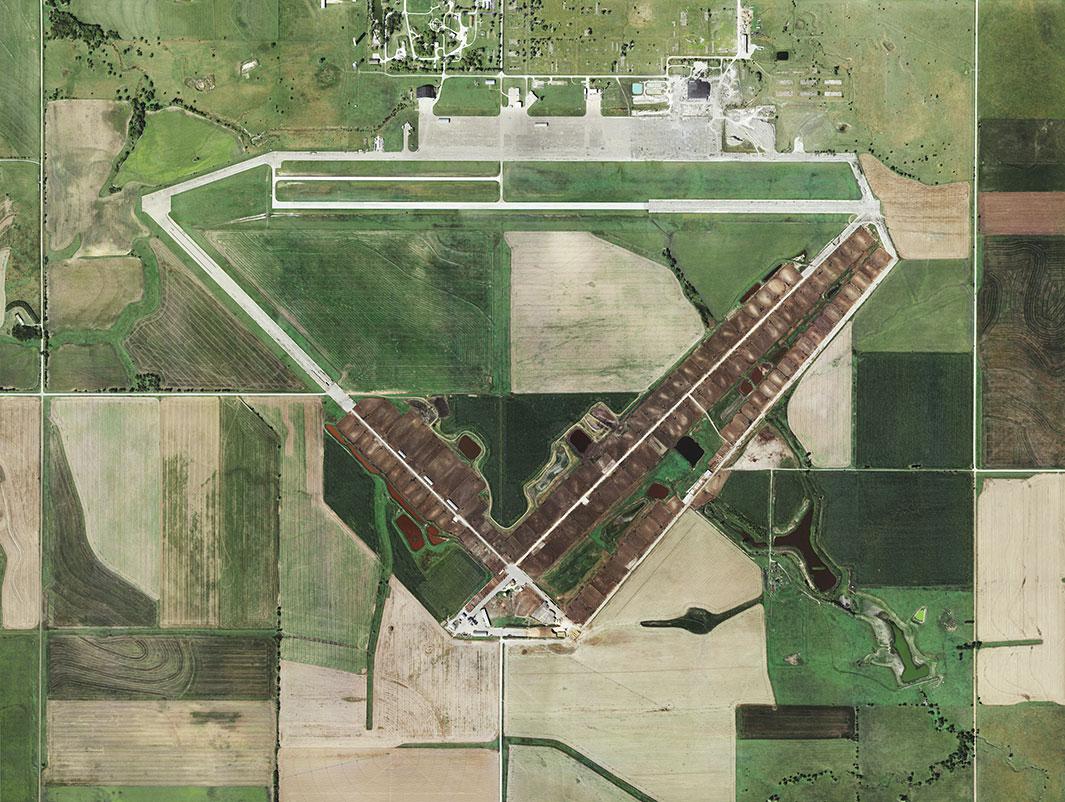
Mishka Henner, Courtesy of Bruce Silverstein Gallery, New York
When he shared the work a few years ago, it quickly went viral. Henner said the online conversations ranged from the banal to highly informative and even taught him about “ag-gag” laws that try to prevent people from taking unauthorized photographs of agricultural operations.
“We’re only one search term away from finding [these images], and yet there are strong efforts to prevent us from seeing it,” he said. “I love that paradox; it’s hilarious because if we want to see this stuff now, it’s possible in a lot of cases to see it.”
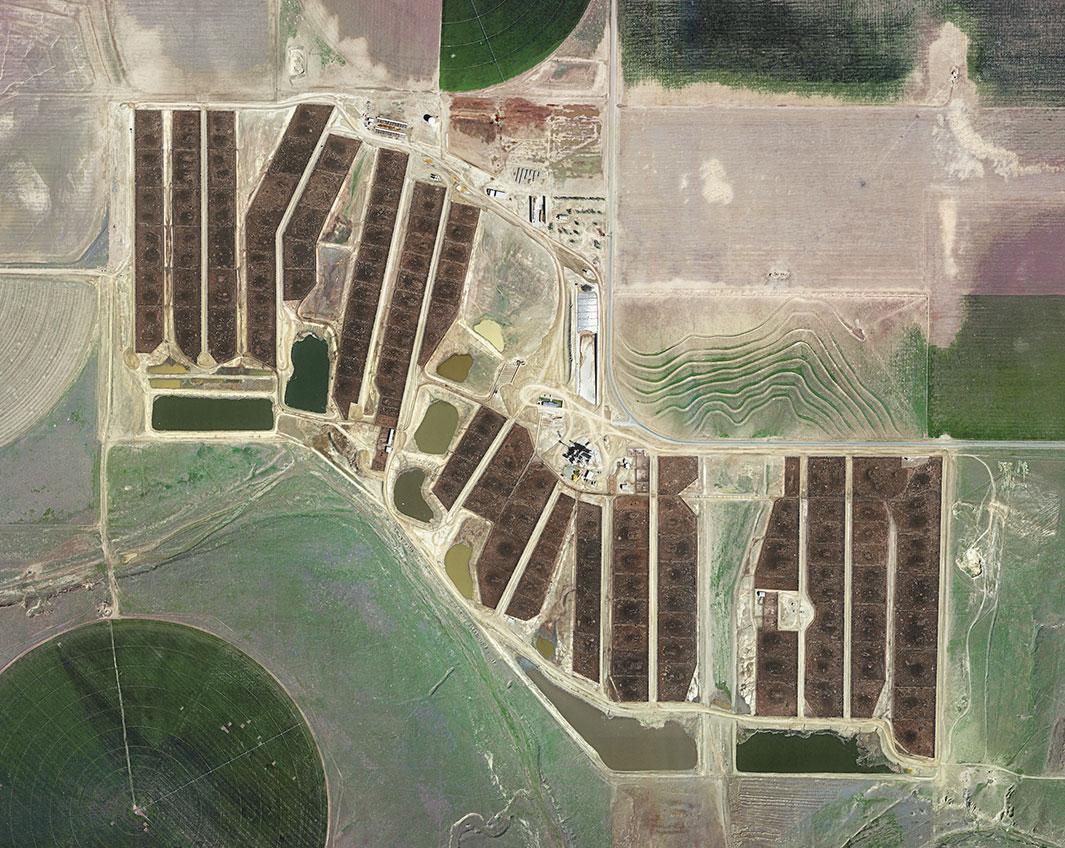
Mishka Henner, Courtesy of Bruce Silverstein Gallery, New York
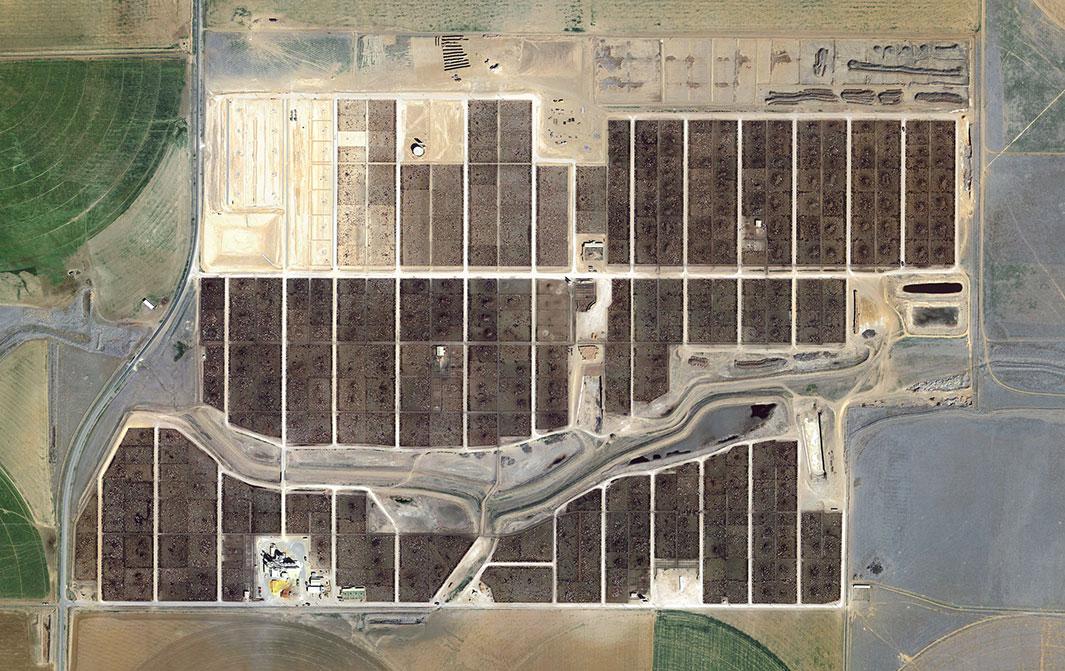
Mishka Henner,Courtesy of Bruce Silverstein Gallery, New York
